Temporal-spatial distribution (dynamics) of phytoplankton and diversity in relation to lake physical and chemical condition
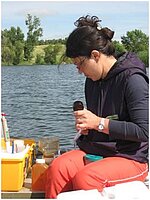
Veselina Valkov is a PhD student in Environmental Conservation Science program at North Dakota State University. She holds a Master of Science degree in Ecology and Environment Protection from Technical University-Varna, Bulgaria. She worked for Institute of Oceanology - Bulgarian Academy of Science focused on phytoplankton ecology. Veselina's current research will address the impacts of changing physical and chemical condition on phytoplankton spatial-temporal distribution and diversity in a eutrophic lake as well as the ecosystem structure and function.
Email: veselina.valkov@ndsu.edu
Phone: 701-231-7051
Fellow: Veselina A. Valkov
Advisor: Dr. Wei Lin, Associate Professor, Department of Civil Engineering North Dakota State University
Degree Progress: PhD in Environmental Conservation Science
Temporal-spatial distribution (dynamics) of phytoplankton and diversity in relation to lake physical and chemical condition
Eutrophication as a result of anthropogenic input of nutrients especially phosphorus and nitrogen (N, P) cause real concerns for surface water quality and is significant problem for North Dakota lakes and reservoirs. Decomposition of organic matter in the sediments causes dissolved oxygen (DO) depletion, leading to stressed fish and potential fish kill. On the other hand release of nutrients from sediments promotes excessive phytoplankton growth. Special concern are Cyanobacteria species(blue-green algae) that tend to form surface scum results in change light penetration to other algal species and aquatic fauna and their dominance may lead to lower diversity in phytoplankton community. Some species release toxins, which could be poisonous and may cause allergic reactions, as well as fish kill.
The problems for lake management and operators related to eutrophication rises when lake fails to meet the water quality criteria for its designated uses (water supply, fisheries, recreation, and amenity and nature conservation) or with impaired aesthetic qualities. Different management practices and lake restoration technologies are applied to achieve and maintain ecological integrity, high water quality and natural habitat conditions.
Henrich Martin Dam (HMD) (Fig.1) located in LaMoure County, ND is an impoundment for recreation and fishing with a surface area of 0.07 km2 and maximum water depth 10.0 m. The impoundment is hiFigure 1 HMD with sampling locationghly eutrophic with frequent algal blooms and anoxic condition in summer. To improve reaeration through better water circulations North Dakota Game and Fish Department installed an aeration system in the deepest part of the lake. However, aeration also causes resuspension of organic particle from sediments which elevates turbidity, adds organic loading to the water column, and likely increases the release of nutrients. The long- and short-term effectiveness of such system on improving lake water quality and impacts on nutrient cycle and phytoplankton growth are not tested enough and fully understood. The relation between phytoplankton and physical and chemical factors are not very well developed in details.
Project Objectives:
To identify the causes of phytoplankton community changes in response to the physical and the chemical conditions. Special attention has to be paid to the dominant species, especially Cyanobacteria. The phytoplankton biovolume and phytoplankton composition of the different groups of algae even on species level varies trough the seasons will studied in order to give better indication for evaluating water quality status of the lake. Monitoring environmental factors will be used to assess long term impact of water quality, for example, test effectiveness of aeration system on biodiversity and water quality.
Progress:
Field samples from 5 sampling stations were collected in summer 2010 and 2011. Physical, chemical and biological data were analyzed to explore how phytoplankton growth will change water quality, such as DO, turbidity, light penetration and chemical composition that in turn may affect phytoplankton ecology. Lack of temperature changes with the depth demonstrate that mixing from aeration system caused destratification and eliminated thermocline. In 2011 after stopping aeration a weak thermal stratification developed. Temperature was relatively constant in all depths during the stratification period and we may assume that it doesn't have significant impact on phytoplankton community. Aeration system improved DO levels on the deeper parts of lake and prevailed developing of anoxic condition. Existing vertical and diurnal gradient depends on photosynthesis and reaeration from atmosphere near the surface and decomposition of organic matter on the bottom of the lake defined vertical variation of DO. Under saturated concentrations of DO evFig. 2 Observed fish kill at HMD 7/27/2011en on the surface indicate high consumption of oxygen in the water column mostly from resuspended organic particles. The accumulation of algae on the surface could be stressed from low DO during the night. In addition high density macrophytes at the shallow parts also affect DO balance in the water. The dramatically depleted DO likely caused the observed fish kill, floating decayed biomass, scum and rotten smell on the shallows parts in the lake (Fig 2).
The inorganic nitrogen as important nutrient (nitrate, nitrite and ammonia) for algae growth in showed less vertical and temporal variation defining nitrogen limitation for phytoplankton growth. The second essential nutrient for algal growth Soluble reactive phosphorus (SRP) concentration gradually increased at all sites in 2010 reached maximum 0.18 mg/l in August. Mixing from aeration system provides continues resuspension from sediments and defined uniform variation of SRP in the water column. The SRP was available and used for phytoplankton growth, but excessive amount still remain in the water column. In 2011 after stopping aeration the transport of nutrients to the surface was depleted and accumulation of ammonia and SRP near bottom implies sediment release as major source of nutrients. In contrast on the surface layers ammonia remains very low concentrations and SRP decreased and possibly both becomes limited for algae growth.
Chla representing total biomass of phytoplankton increased with increasing of temperature, duration of the day, as well as nutrient availability. Ten classes of phytoplankton were identified, dominated of which were Bacillariophyceae, Dinohyceae, Chryptophyceae, Cyanophyceae and Chlorophyceae. At the June 2010 as well as 2011 conditions in the upper mixed layer of the water column are favorable (light and nutrients) for fast growing class Bacillariophyceae (Figure 3). Uniform water condition and lack of density differences in 2010 cause phytoplankton cells to migrate deeper and relatively high concentrations of Chla were observed at 6 and 7 m in depth. Later in summer in 2010 the Dinophyceae (Fig. 4) become a dominating with slow growing species and long generation time. Their ability to move and asquare nutrients in the water and to store orthophosphates in structures defining their survival under phosphorus limited condition. Class Cyanobacteria contributed with less than 11% from total abundance. In 2011 Chla increased rapidly before aeration was stopped. Nitrogen limited condition promotes growing of N fixing Cyanobacteria. On June, 13th we observed healthy green in color population of Aphanizomenon sp. The filaments formed flake and ball like aggregates (Fig. 5). Stopping of aeration system decreased mixing and phytoplankton tends to remain on the surface euphotic zone and accumulates there. Chla continuing to increase reached maximum of 93.98 µg/l. at site A (>10 µg/l is eutrophic lake). Secchi depth decreased from 2.00 to 0.70 m at deepest site A. The Aphanizomenon sp. aggregates devolve into single filaments, indicates that dominant species is stressed. Thus morphological change made them more available for zooplankton grazing. Two weeks on 27th July after the bloom started to collapse and we observed decayed algae on the surface and killed fishes. Decreased of Chla during the period without aeration might be because of limited supply of nutrients (phosphorous) into the epilimnion. High values at D site could be related with wind direction that moved phytoplankton near to the shoreline. The population continued to decrease and replaced by Dinoflagellate and Cryptophyceae, using an open niche after Cyanophyceace decreased. Class Chrysophyceae characterized with occurrence of mixotrophy was found once in June 2010 and in August and September in 2011. Stopping aeration changed the mixing condition and environment for phytoplankton growth. The reduced supply of nutrients especially P from the bottom seems to be the main reason for changing the phytoplankton community as well as water quality.
Significance:
Apply knowledge on variation of phytoplankton population distribution and diversity can contribute to better understanding of ecological status of eutrophic lakes. The spatial-temporal distribution and diversity according to the physical chemical condition – seasonal mean and maximum abundance together with Chla concentration can be used to determine impairments, and many monitoring programs. The knowledge about the correlation between fresh water phytoplankton and physical and chemical factors could be use for controlling of problematic excessive algae growth (especially for nuisance species) and more specific to check effectiveness of applied management practices. The phytoplankton play a key role in global climate change by removing carbon from the atmosphere and injecting it into the water bodies, also they are involved into nutrients cycle through environment.
Conference:
Veselina Valkov as a PhD student at NDSU I have two presentations on International Student Prairie Conference 2010/2011: posters at NDAWWA 2010/ 2011 and presenter at 2012 North Dakota Water Quality Monitoring Conference.
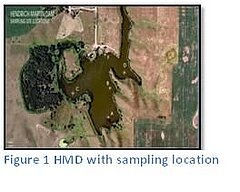
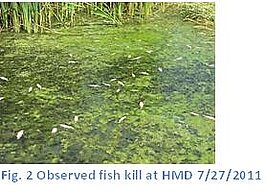
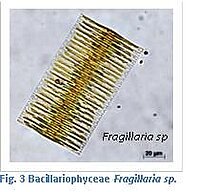
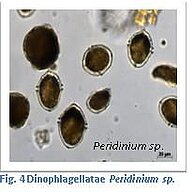
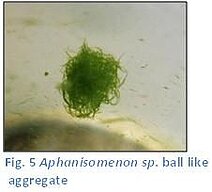

Wei Lin
Civil & Environmental Eng.
Office: Civil/Ind Eng 201D
Telephone: 701-231-6288
Email: wei.lin@ndsu.edu


